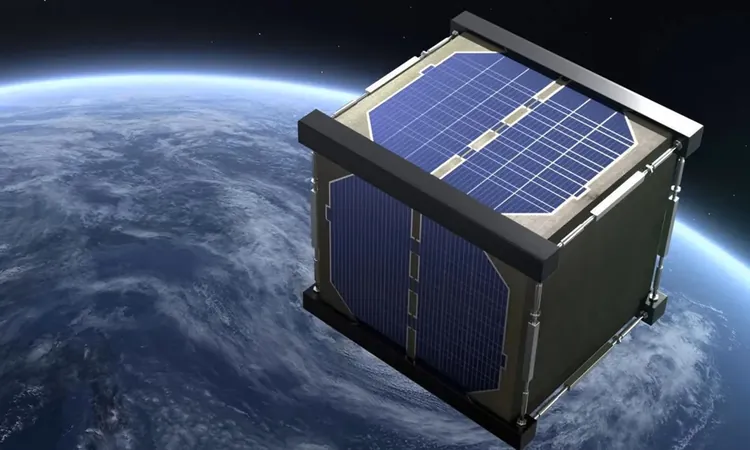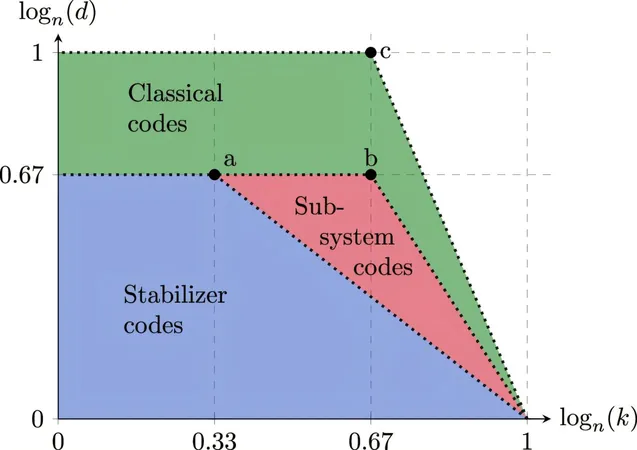
Japan Pioneers the Launch of the World’s First Wooden Satellite!
2024-11-07
Author: Charlotte
Introduction
In a groundbreaking move for space exploration, Japan has made history by launching the world's first wooden satellite, aimed at tackling the pressing issue of space debris that has been a mounting concern for decades. As of now, there are an astonishing 40,500 pieces of debris larger than 10 cm in Low Earth Orbit (LEO) alone, as reported by the European Space Agency (ESA). This troubling number has the potential to multiply drastically with the rise of commercial space ventures deploying mega-constellations of satellites for various purposes, from telecommunications to broadband services.
LingoSat: An Eco-Friendly Initiative
To confront this growing menace, researchers from the University of Kyoto have engineered LingoSat, a small, eco-friendly satellite constructed primarily from magnolia wood, leaving aside only its electronic components. Successfully launched aboard a SpaceX Falcon 9 rocket from NASA’s Kennedy Space Center in Florida, LingoSat represents the first in a series of innovative satellites designed to prevent further debris in space and avert the onset of “Kessler Syndrome.”
Understanding Kessler Syndrome
Kessler Syndrome, named after NASA scientists Donald J. Kessler and Burton G. Cour-Palais, warns of a catastrophic scenario where increased collisions in LEO lead to an explosion of debris, making space navigation perilous. With the launch of LingoSat, scientists hope to disrupt this ominous trajectory. The wooden satellite, measuring just 10 cm on each side and tipping the scales at a mere 900 grams, is one of the lightest objects ever sent to the cosmos.
Innovative Design Philosophy
One of the most revolutionary aspects of LingoSat is its design philosophy. Upon nearing the end of its lifecycle, the satellite is expected to burn up upon re-entering Earth's atmosphere, minimizing environmental concerns associated with metallic debris scattering across our planet. This clean approach could redefine the future of satellite launches, promoting sustainability in space endeavors.
Launch and Mission
Prior to its lift-off, LingoSat was carefully placed into a specialized container by the Japan Aerospace Exploration Agency (JAXA). According to Sumitomo Forestry, one of the satellite's developers, it is expected to arrive at the International Space Station (ISS) shortly and will be deployed into orbit approximately a month thereafter.
After docking with the ISS through the Kibo Japanese Experiment Module (JEM), LingoSat will conduct an extensive six-month mission, sending back invaluable data to scientists monitoring its performance against the harsh conditions of space. Aiming to evaluate whether wooden satellites can endure the extreme temperature fluctuations and vacuum of outer space, this initiative marks a significant leap forward in satellite technology.
Future Prospects
Looking ahead, preparations are already underway for LingoSat 2, scheduled to launch in 2026. This second satellite will be a dual-unit CubeSat, expanding upon the findings of its predecessor and paving the way for additional wooden satellites that could reshape how we perceive space debris and sustainability in space exploration.
Conclusion
As scientists gear up for this innovative journey, one question lingers: Could this wooden wonder be the key to a cleaner, safer future in our vast cosmos? Stay tuned as we keep you updated on this exciting development!









 Brasil (PT)
Brasil (PT)
 Canada (EN)
Canada (EN)
 Chile (ES)
Chile (ES)
 España (ES)
España (ES)
 France (FR)
France (FR)
 Hong Kong (EN)
Hong Kong (EN)
 Italia (IT)
Italia (IT)
 日本 (JA)
日本 (JA)
 Magyarország (HU)
Magyarország (HU)
 Norge (NO)
Norge (NO)
 Polska (PL)
Polska (PL)
 Schweiz (DE)
Schweiz (DE)
 Singapore (EN)
Singapore (EN)
 Sverige (SV)
Sverige (SV)
 Suomi (FI)
Suomi (FI)
 Türkiye (TR)
Türkiye (TR)